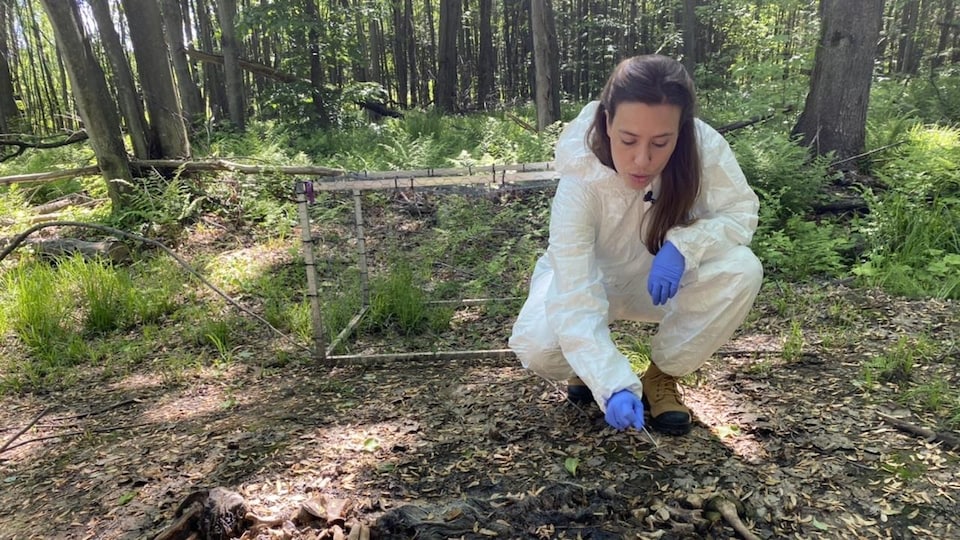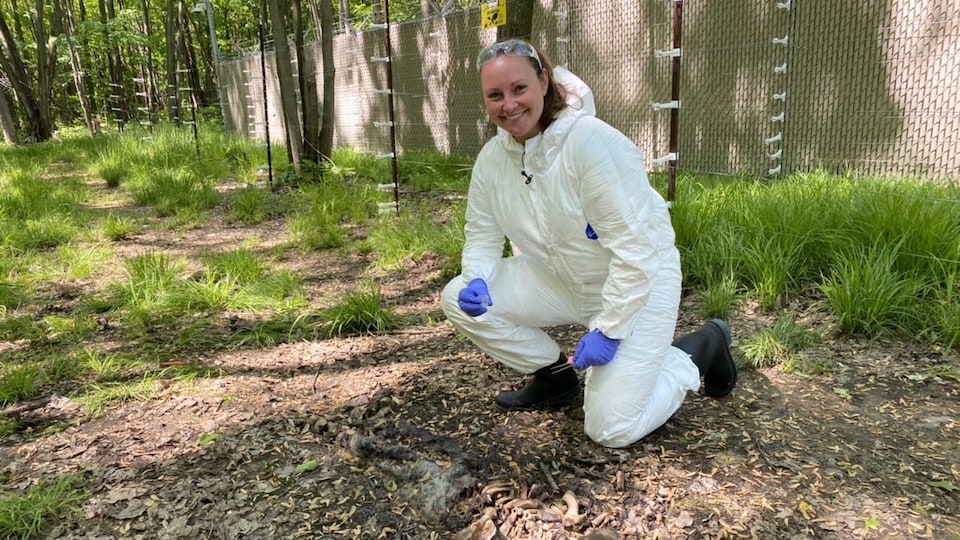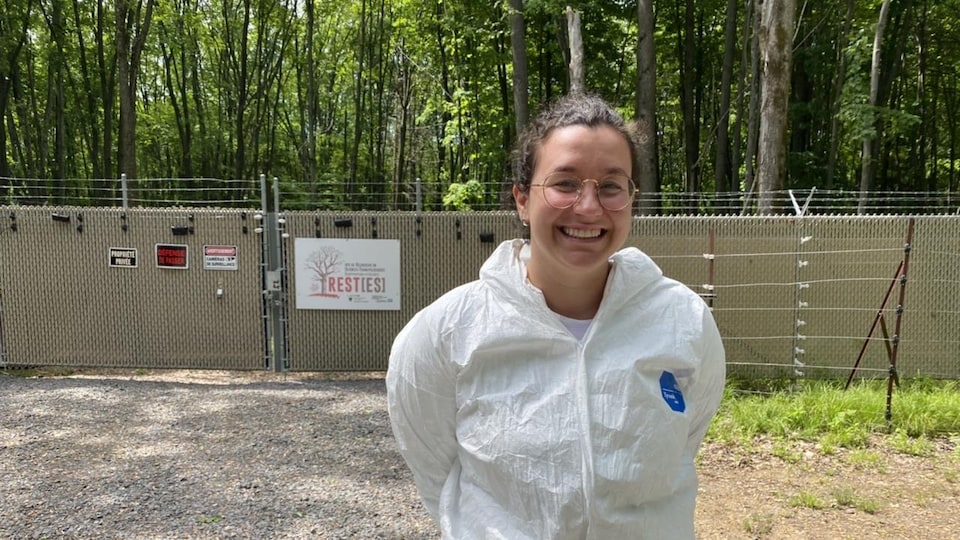It is managed by the University of Quebec at Trois-Rivières. There are few such places in the world and it is a unique opportunity for researchers here to advance science in the field of forensics.
Taphonomy is the decomposition, the evolution of a human body after death. The way in which the skin, its organs and its bones degrade over time and these are elements that are valuable in enabling the investigation services to identify a deceased person, a person in a criminal context.
indicates the forensic anthropologist, Agathe Ribéreau-Gayon who works on the site of the UQTR. She adds that it helps to determine how long the person has been dead.
The bodies of 16 deceased who chose to donate their bodies to the anatomy laboratory of the UQTR are distributed on the site.
” They are placed on their backs, covered with a cage to limit the interaction of scavenger animals in semi-natural conditions. Its very important for us. The conditions under which the donors are deposited and under which we have the chance to study them here are conditions extremely close to a real criminal or forensic scenario. »
The privacy and integrity of donors are preserved. The enclosure is fenced with barbed wire, monitored by security cameras the UQTR.
Even merely curious scientific researchers are not admitted. To enter, visitors must present a relevant research project.
All around the enclosure are deposited pigs, also covered with a cage. Pigs are traditionally recognized in literature for resembling human beings. They have two arms and two legs like us. They have an abdomen and a head
says the forensic anthropologist.
Since research has historically been carried out on pigs, researchers now want to compare the data collected with this animal and that taken from human bodies.
This is the principle with which entomology student Sophie Morel works. It follows in parallel the colonization of insects on the corpses of pigs and human bodies.
” Insects have several advantages in forensics. It’s going to be mainly to study the post-mortem interval. With the flies found on the corpses, we will be able to determine when the body was placed in the environment. »
To achieve this, she lists the order in which the insects come to colonize the body of the deceased. That’s why we come every day during the first few days to see which fly came to lay eggs first.
she says.
Encapsulate odors
Frédérique Ouimet is a master’s student in environmental sciences. It collects the odors of decomposition. The ultimate goal, to refine the noses of dogs trained to search for human remains.
Ontario police forces come to Bécancour in particular for the training of their canine squad.
It lets them know if the tools they use to train their dogs are comparable to normal decomposition in nature
.
The Bécancour site is the only French-speaking site in the world. It is led by Shari Forbe, holder of the Canada 150 Research Chair in Forensic Thanatology. She founded a similar site in Australia.
In Bécancour, the laboratory allows the study over four seasons and the researchers are already dreaming of an expansion to always push their research a little further.
Reference-ici.radio-canada.ca


